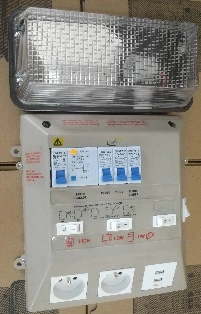Detailed analysis of the material quality requirements of the distribution box
The distribution box is a device used for circuit distribution and control, and the quality of the material is directly related to its safety and reliability. The following are the material quality requirements of the distribution box:
1. Shell material: The shell of the distribution box is usually made of steel plate. The material requires high hardness and strength, good corrosion resistance, and needs anti-rust treatment to ensure that there will be no rust for long-term use.
2. Conductive materials: The requirements for the conductive materials inside the distribution box are very strict, and must be high-quality copper materials to ensure that the current can be transmitted stably, and safety accidents will not occur due to poor electrical conductivity of the materials.
3. Insulating material: The insulating material in the distribution box should have good heat resistance, corrosion resistance, pressure resistance, wear resistance and water resistance to ensure the safety and reliability of the distribution box.
4. Connecting piece material: The connecting piece material in the distribution box requires high strength, high hardness, and is not easy to deform. The surface of the connecting piece should be smooth and free from defects such as burrs.
5. Accessory materials: The quality of the accessories of the distribution box should also be excellent. For components such as switches, fuses, and leakage protectors, high-quality materials should be selected to ensure stability and safety.
To sum up, the material quality requirements of the distribution box are very high. In addition to meeting the electrical performance requirements, durability, safety and reliability must also be considered to ensure the safety of users and electrical equipment.


